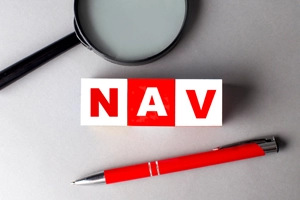
Have you ever handed a shopkeeper a crisp Rs 100 note for something that costs Rs 97? It is easier than looking for loose change, right? Sometimes, the amount seems so trivial that you do not even bother asking for the Rs 3 back. This little act of rounding off can happen with respect to the Net Asset Value of mutual funds, too. But does the rounding-off of the NAV in mutual funds really make a difference to you? Let’s find out.
What do you mean by rounding off the NAV?
Rounding-off refers to changing the value of the NAV to a set number of decimal places. The NAV is the per-unit cost of a scheme. It determines how many units you receive when you invest in mutual funds. For instance, if the NAV is Rs 10 and you invest Rs 1,000, you will get 100 units.
However, NAVs are rarely whole numbers. They can also fluctuate daily based on the market value of the fund’s underlying assets. In most cases, NAVs extend to multiple decimal places. This can lead to a lot of confusion, which is why the Securities and Exchange Board of India (SEBI) allows rounding off the NAV to either two or four decimal places, depending on the fund type. As per Regulations 48(1) and 77 of SEBI (Mutual Funds) Regulations, 1996, these rounding-off rules have been in place since August 31, 2002.
When NAVs are rounded off, any leftover amount may either stay with the mutual fund or be passed on to you, depending on how the rounding is done that day.
How do different types of mutual funds round off their NAVs?
The SEBI has specified the decimal rounding rules for different types of mutual funds as follows:
- Debt-oriented schemes: All types of debt mutual funds, including liquid funds, gilt funds, money market funds, short-term plans, fixed maturity plans, income funds, and monthly income plans, must round off NAVs to four decimal places.
- Equity-oriented schemes: Equity-oriented mutual funds must round off NAVs to two decimal places. However, fund houses have the discretion to round off NAVs to more than two decimal places if they choose to.
- Hybrid fund schemes: Hybrid funds must round off their NAVs to two decimal places. However, like equity funds, they also have the flexibility to round off to more than two decimal places if needed.
- Index funds: Index funds must round off their NAVs up to four decimal places.
Why must asset management companies round off the NAV in mutual funds?
Here are some reasons why mutual fund houses must round off the NAV:
- To avoid confusion: NAVs often have multiple decimal places, which can be overwhelming and hard to comprehend for some investors, especially in the case of high-value investments. Rounding off the NAV simplifies this and makes it easier for you to understand your mutual fund holdings.
- To ensure uniformity: Without a standard rule, each mutual fund house could choose its own way of rounding off the NAV. Some might round it to two decimal places, others to four, and some might not round it at all. This inconsistency can be misleading. A uniform rounding-off method ensures fairness and clarity across all types of funds.
- To avoid errors: More decimal places may translate to a higher chance of small miscalculations. Rounded figures help reduce these errors and make transactions smoother. This ensures accuracy in your investments.
- To manage fractional units: NAVs with multiple decimal places can lead to fractional units. These fractions cannot be directly traded in the secondary market. Rounding off the NAVs ensures that you receive whole or standardised unit values, which can be easily redeemed later.
To sum it up
Rounding off the NAV has improved clarity and consistency across mutual funds. Moreover, it has benefitted both investors and fund houses. It ensures that calculations remain standardised and reduces confusion and errors. This is yet another way SEBI has worked to make mutual fund investments more transparent and secure for you.
An investor education initiative by Edelweiss Mutual Fund
All Mutual Fund Investors have to go through a one-time KYC process. Investors should deal only with Registered Mutual Fund (RMF). For more info on KYC, RMF and procedure to lodge/redress any complaints, visit - https://www.edelweissmf.com/kyc-norms
MUTUAL FUND INVESTMENTS ARE SUBJECT TO MARKET RISKS. READ ALL SCHEME-RELATED
DOCUMENTS CAREFULLY
Trending Articles
MUTUAL FUND INVESTMENTS ARE SUBJECT TO MARKET RISKS, READ ALL SCHEME RELATED DOCUMENTS CAREFULLY.















